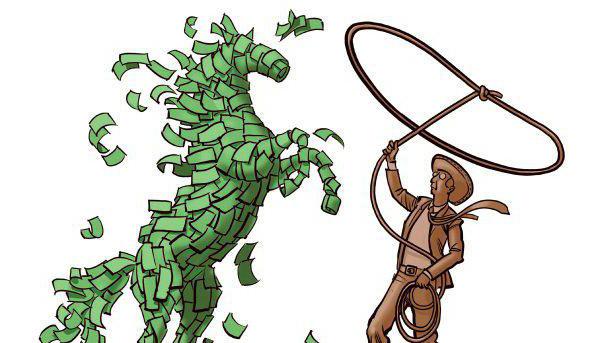Any enterprise is interested in obtaining the greatest profit at the lowest cost. The profitability of his work depends on this. Therefore, in analytical activities, accounting and classification of expenses occupies an important place. Costs are an important category that affects the cost and competitiveness of products. Therefore, its study is mandatory in the activities of the analytical service of almost any enterprise or organization.
To get more income from sales in the reporting period, the manager must identify negative trends in the distribution of costs and develop measures to improve them. To do this, he must have complete information on this issue.
Definition of concepts
To correctly understand the cost accounting procedure of an enterprise, it is necessary to understand these economic categories. This will avoid confusion.
Costs are all the "donations" of the enterprise, which were made by him to obtain a certain result. These are both material costs expressed in money terms and lost profits.

Keeping a record of costs, financial workers distinguish between costs and expenses. Although often used as synonyms, these concepts are not entirely true.
In general terms, it can be said that costs are funds spent by the company on the purchase of goods or services, which are subsequently deducted from profit. And expenses are the cost of all the resources that the company has already spent in a certain period for future income. Costs are reflected in the balance sheet accounts until the moment when the income from their use is received. At this point, they become waste and are displayed in the income statement.
The need for classification
Classification of costs is a necessary tool in the work of the analyst. This allows a comprehensive look at this economic category.
By collecting costs for certain characteristics in groups, you can more effectively manage them. Having studied negative trends, it is easier to develop measures to improve the situation from different sides of the impact.

Applying cost classification, the financial manager carries out the planning process qualitatively. Based on the information collected in a certain way, the manager will be able to direct the company's activities in the right direction.
Therefore, the classification of costs can improve their structure and get more net profit in the planning period.
Types of production costs
By grouping production costs, we can distinguish their main categories at the place of occurrence, types of expenses and cost holders.

In the first principle of grouping, data is collected from homogeneous structural units (workshops, sections, industries). This allows you to track the internal production organization and the functioning of each unit.
Cost carriers are homogeneous groups of products and services of a company. This information is used to analyze unit costs. And by type, costs are collected in groups according to calculation items and economically homogeneous elements.
Economically homogeneous elements
Under the homogeneous from an economic point of view, the types of costs for the production and sale of products accept groups that cannot be decomposed into separate components. Such items include the following categories:
- material costs;
- salary;
- social Security contributions;
- depreciation;
- other manufacturing costs.
Regardless of the place and purpose of occurrence, these articles display information for reporting period. it allows you to analyze current costs. The calculation involves the consideration of part of each article in the total number of costs.

For example, if the material costs in the structure are the largest, production is considered material intensive.
Costing
To consider the cost of its constituent elements, make the calculation of costing. The list of articles is determined based on the industry affiliation of the company, as well as the internal organization of the company.
However, the costs of production and sales are usually calculated according to the following system:
- Materials, raw materials.
- Purchased resources (services, semi-finished products).
- Fuel, energy for production.
- Extrabudgetary fund deductions.
- Preparation, development of production.
- Remuneration of workers.
- The costs of servicing machinery and equipment.
- Total costs of the company.
- Household items of expenses.
- Losses from marriage.
- Selling costs.
From the 1st to the 8th points in total add up to the workshop cost, and the last 3 articles are the production price of the product.
Attribution to cost
The volume of total costs is divided by the method of allocation to the cost of direct and indirect. The latter cannot be assigned immediately to a unit of production.
Indirect costs are accumulated over the entire period, and then are already taken into account in the cost of all finished products. These include the labor costs of staff, the cost of auxiliary components, maintenance of industrial premises.
Direct costs can be charged directly to the unit of production. They arise in the manufacture of a certain type of product. The larger the share of direct costs in their total number for the enterprise, the more accurately you can determine the value of its cost. The analysis of costs in the current and planning period depends on this.

Possibility of regulation
The costs of any enterprise can be divided into managed and unregulated. Such a classification is necessary for managers to understand what they can influence and what not.
The regulated group is fixed for specific control centers. They are controlled by purchasing managers, warehouse managers, heads of production preparation groups, etc.
Regulated include the costs associated, for example, with a violation of labor discipline or production technology.
Almost all expenses belong to this general group. Only their management centers differ in terms of reference. Global issues are decided by the head of the enterprise. The control over the costs of the site is carried out by the heads of the workshops, which cannot influence general production decisions.
Unregulated costs are costs that managers cannot influence. This, for example, depreciation of premises and equipment.
Such a division allows you to clearly identify the scope of competence of each manager.
Classification for analysis
For the analysis, the total cost is divided into actual and planned. Actual waste is displayed at the end of the current period after the company receives revenue.
Based on this information, an analysis of the work is carried out, and planning is carried out in the long and short term. On their basis, negative development trends are determined and eliminated.
Planned costs are the marginal cost of the future. At the same time, progressive average annual expenditures are taken as a basis. With their help, a plan is drawn up for a different perspective.
Behavioral classification
Very important for planning decisions is the separation of costs into fixed and variable. This classification allows us to calculate future cost behavior.

Variable costs vary in proportion to the volume of production. Fixed costs do not depend on fluctuations in the total number of manufactured and sold products.
The first group includes materials, fuel, energy (used in the technological process), as well as other costing items that are directly related to production. For example, these are storage costs, packaging, transportation and shipping.
The constant include expenses of a managerial and administrative nature, depreciation, advertising, etc.
Change in production
Calculation of costs in the planning period involves the use of behavioral classification to reduce production costs.

This is possible due to the different type of cost response to the scale of production. With its increase, variable varieties grow in proportion to the total output.
But the fixed costs with the increase in scale remain the same. Therefore, if the company increased production, the total cost of finished goods and services decreases.
If you combine both types of costs, you can get a dependency. Average unit costs vary inversely with the volume of production.
Semi-variable, semi-constant costs
The separation into variables and fixed costs is rather arbitrary. Many embezzlement are uncertain.
Semi-permanent include a group of expenses, which, when the scale of production changes, increase or decrease stepwise. They are unchanged to a certain point, after crossing which their level increases sharply.
Semi-variable varieties have mixed characteristics. One part of them changes with the growth of production, and the remaining costs remain at the same level. For example, a phone charge consists of a constant monthly fee and long-distance calls.
It should also be noted that variable costing items can change faster or slower, comparable to a change in the scale of output. Therefore, when calculating the response of these economic categories to an increase or decrease in production volumes, the force coefficient of the influence of external conditions on the indicator is used.
This makes the analysis more informative and adequate to the existing reality. Its results will help to plan properly.
Having become acquainted with the characteristics of accounting and classification of costs, we can conclude that costs are an important indicator of financial and economic analysis. His study allows the manager to understand the existing situation at the enterprise and find reserves for its improvement. By exploring various cost classifications, one can comprehensively consider internal problems, the understanding of which opens up opportunities to optimize their structure and make big profits.








